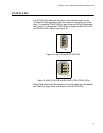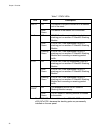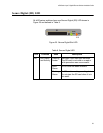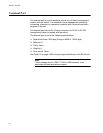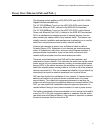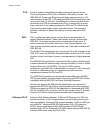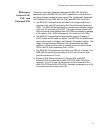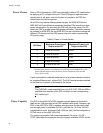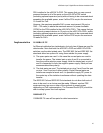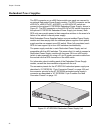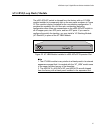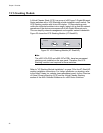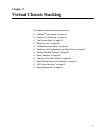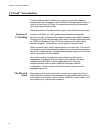x600 Series Layer 3 Gigabit Ethernet Switches Installation Guide
45
PSU installed in the x600-24Ts-POE. This means that you can connect
powered devices to all of the ports on the x600-25Ts-POE switch
(excluding optional expansion ports) without having to be concerned about
exceeding the available power, even if all the PD's require the maximum
15.4 watts for PoE.
However, the maximum possible PoE+ power requirement (24 ports x
30W ~ 720 watts) is above the maximum amount of power available
(370W) for the PSU installed in the x600-24Ts-POE+. This means that you
can connect powered devices to 12 ports on the x600-24Ts-POE+ switch
(excluding optional expansion ports) without having to be concerned about
exceeding the available power, even if all the PD's require the maximum
30 watts for PoE+.
Implementation 10/100BASE-TX
An Ethernet cable has four twisted pairs, but only two of these are used for
data transfer. Note that both the x600-24Ts-POE and x600-24Ts-POE+
switches use the data twisted pairs. The IEEE 802.3af and IEEE 802.3at
standards allow two options for using these cables for power supply.
The spare pairs are used. In this case the unused pairs are used to
transfer the power. The twisted pair on pins 4 and 5 is connected to
form the positive electric power supply, while the twisted pair on pins 7
and 8 is connected to form the negative power supply. Each pair can
accommodate either polarity.
The data pairs are used. The twisted pair on pins 3 and 6 and the pair
on pins 1 and 2 can be of either polarity. Since Ethernet pairs are
transformer coupled at each end, it is possible to apply DC power to
the centre tap of the isolation transformer without upsetting the data
transfer.
The IEEE 802.3af and IEEE 802.3at standards do not allow both sets of
wires to be used, so a choice must be made. Different vendors PSE
equipment may use one or other of the methods to supply power
depending on PoE implementation. The Powered Device (PD) should be
able to accept power from both options.
1000BASE-TX
1000BASE-TX uses all four pairs for data transmission.



